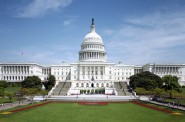Wisconsin Near Bottom in Public Health Spending
Wisconsin ranks 48th lowest, far below average spending per capita by states.
![U.S Pennies. By Roman Oleinik (Own work) [CC BY-SA 3.0 (http://creativecommons.org/licenses/by-sa/3.0) or GFDL (http://www.gnu.org/copyleft/fdl.html)], via Wikimedia Commons.](https://urbanmilwaukee.com/wp-content/uploads/2016/06/U.S_pennies.jpg)
U.S Pennies. By Roman Oleinik (Own work) [CC BY-SA 3.0 (http://creativecommons.org/licenses/by-sa/3.0) or GFDL (http://www.gnu.org/copyleft/fdl.html)], via Wikimedia Commons.
In Wisconsin, as in other states, we expect a lot from the public health system. However, we generally take that system for granted, and Wisconsin has one of the most poorly funded public health systems in the nation.
A recent report by the Trust for America’s Health (Investing in America’s health: a state-by-state look at public health funding and key health facts) compares the total spending level for public health in each state in 2015, and it also ranks states by the public health funding from a variety of sources. That report reveals the following:
- Wisconsin had the third lowest level of total spending for public health per capita, ranking 48th nationally, as the following graph illustrates.
- If we focus on just the funding from state revenue, Wisconsin was among the bottom ten states, ranking 41st last year.
- Wisconsin’s state funding for public health, $15.10 per capita, was 55 percent below the median level among all states.
Wisconsin’s very low level of spending for public health compared to other states is a significant concern – both because of the importance of public health departments and because other states haven’t set the bar very high. As the report from Trust for America’s Health states:
“…the public health system has been chronically underfunded for decades. Analyses from the Institute of Medicine (IOM), The New York Academy of Medicine (NYAM), the U.S. Centers for Disease Control and Prevention (CDC) and a range of other experts have found that federal, state and local public health departments have been hampered due to limited funds and have not been able to adequately carry out many core functions, including programs to prevent diseases and prepare for health emergencies.”
The report also describes the vitally important role of public health departments:
“Investments in public health are essential for tackling the biggest health problems facing the country. They help prepare for and control emerging and persistent threats, from the Zika virus to the Middle Eastern Respiratory Syndrome (MERS) to antibiotic resistance to the dramatic rise in prescription painkiller and heroin use to contaminated water and other sources of lead poisoning in communities to obesity and tobacco use and related chronic diseases.”
Wisconsin is not immune to those sorts of public health threats. Many times each week we see stories about significant public health issues in our state, such as the Isthmus article today about the explosion in opioid overdoses in the Madison area. Other examples turned up by a quick search include stories about Lyme disease, norovirus outbreaks, West Nile Virus, lead in drinking water,contamination from septic waste, and other types of well water contamination – among many other public health threats.
Keeping up with all these threats is extremely difficult for local governments whose budgets have been squeezed by state-imposed limits on property taxes and cuts in state shared revenue. Yet it is critically important to be vigilant and head off potential public health problems before they become huge and very costly health crises. Flint, Michigan provides a very compelling yet tragic example of the tremendous human and financial cost of not adequately monitoring and responding to public health risks.
State lawmakers need to take a hard look at the capacity of Wisconsin’s public health system to respond to the opioid epidemic and all the other public health threats, and then ensure that tightfisted spending on public health doesn’t cost Wisconsinites far more in the long run.
By Jon Peacock and Joanne Brown
Wisconsin Budget
-
Charting The Racial Disparities In State’s Prisons
 Nov 28th, 2021 by Tamarine Cornelius
Nov 28th, 2021 by Tamarine Cornelius
-
State’s $1 Billion Tax Cut Leaves Out 49% of Taxpayers
 Sep 21st, 2021 by Tamarine Cornelius
Sep 21st, 2021 by Tamarine Cornelius
-
TANF Program Serves a Fraction of Poor Families
 Aug 30th, 2021 by Jon Peacock
Aug 30th, 2021 by Jon Peacock

















Instead of just looking at the amount of money being spent, look at the level of care our residents are receiving. The program I work with provides a very high level of care at an extremely low cost because of low administration costs. This is a model program that the insurance companies are about to get their hands on and make the cost go through the roof. Then! our budget will have to grow and look more like other states but now with a lower level of care.
shouldn’t this be adjusted for the living costs associated for each state?
CA can spend double per person than us all it wants, but it can cost more to live in that state too.
Is this an opinion piece or a news story? If it is an opinion piece, why is it not identified as such?
Wisconsin is ranked 9th in having the least number of people without health insurance according to the Kaiser Foundation. How does this play into our need for public health spending?
The Wisconsin Budget Project is a left-leaning organization that wants more government spending and higher taxes. That is their perogative, but it would be less deceptive if they were identified as such. Maybe we need more public health spending. But by cherry picking statistics Wisconsin Budget Project and Urban Milwaukee are misleading readers on complex issues that deserve more than one-sided, deceptive by omission, arguments.
Funny, the Journal Sentinel had an article last week where as, the State of Wisconsin spends more money on health assistance for the elderly and disabled than is spent on state spending for the UW- System, also Walker and the Republican spent more on Badgercare than anytime during the Democratic Dog Doyle administration.
Jason neglects to mention that the state contribution to the UW system, that is the comparison for public health spending, is currently the lowest since 1974. In addition, Jason fails to mention that Badger-care spending has skyrocketed because the ideologically driven Walker and his tea party posse in the legislature refused Medicaid expansion, resulting in a massive shift from federal dollars to state tax payers. There are many real numbers out there that show how Walker’s ill conceived war on public institutions has driven this state backwards, but you won’t hear them from Charlie Sykes or Mark Belling, whose whole agenda is to rile up the angry resentful Trump supporters in the Milwaukee suburbs.